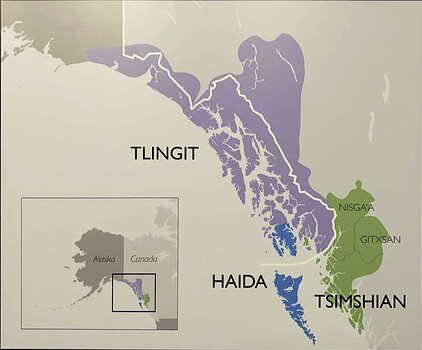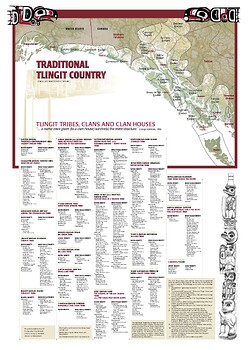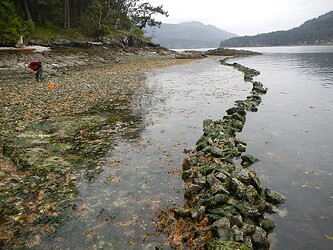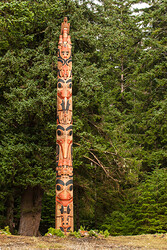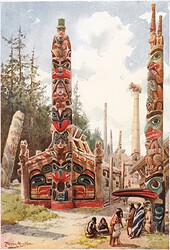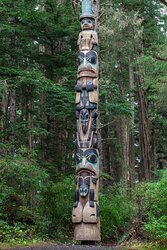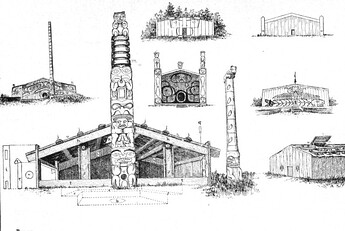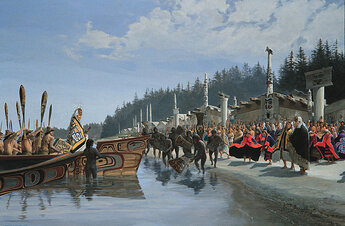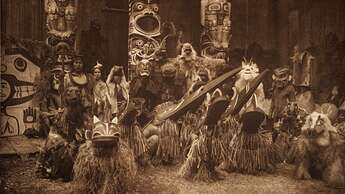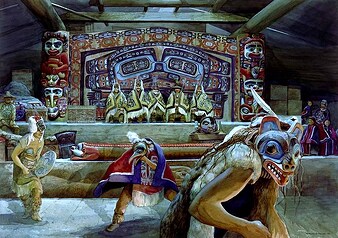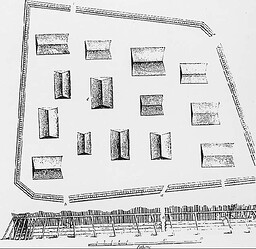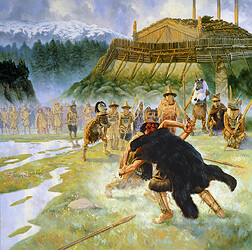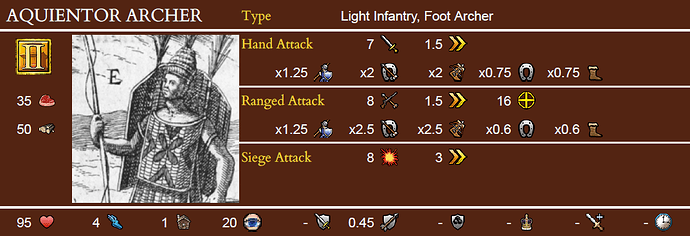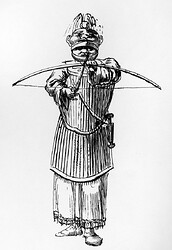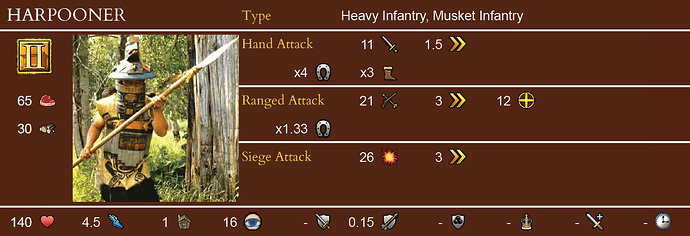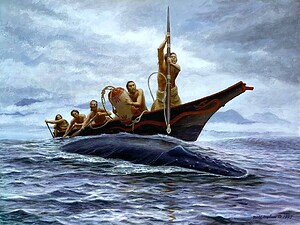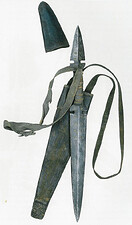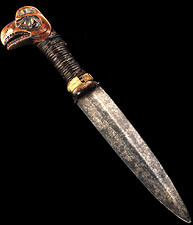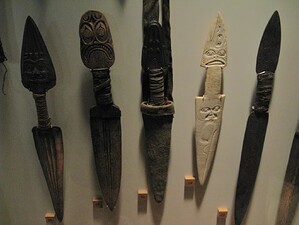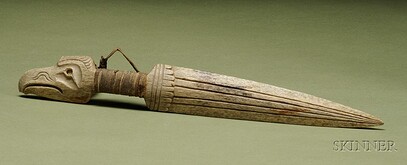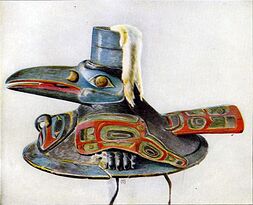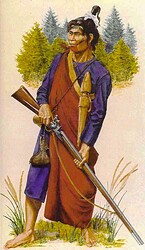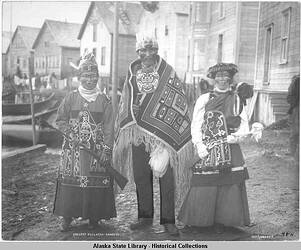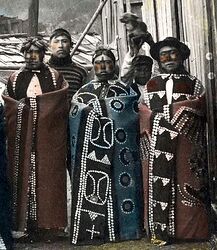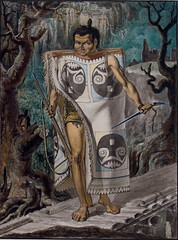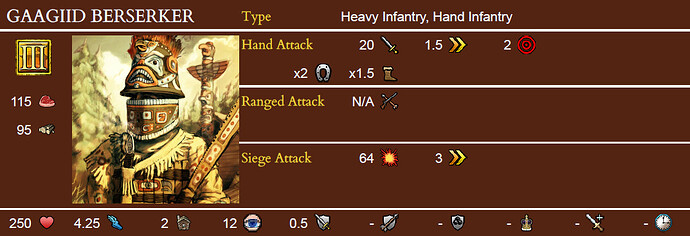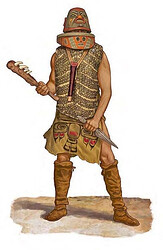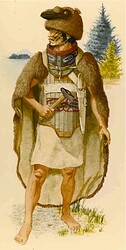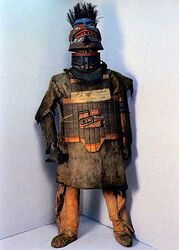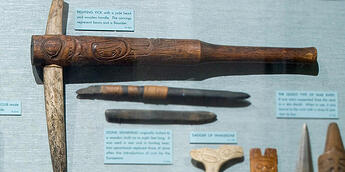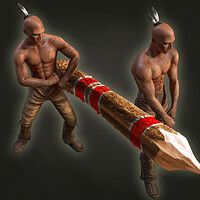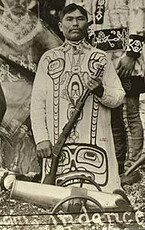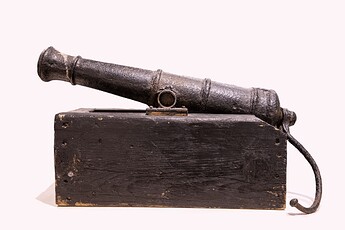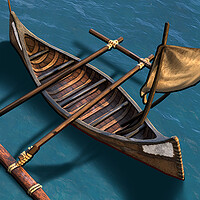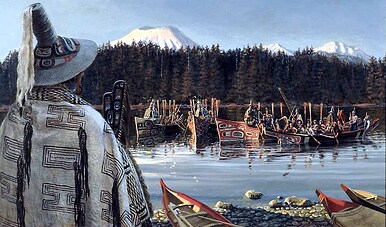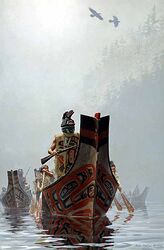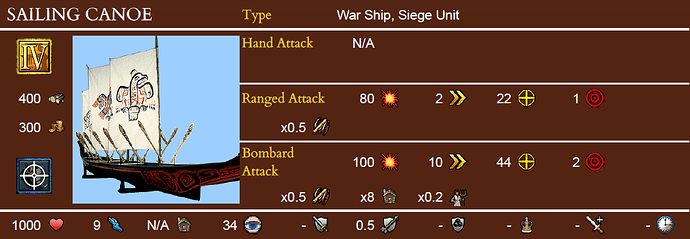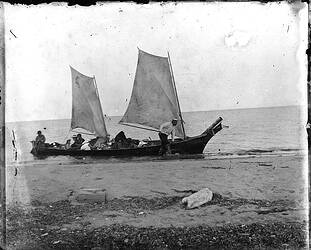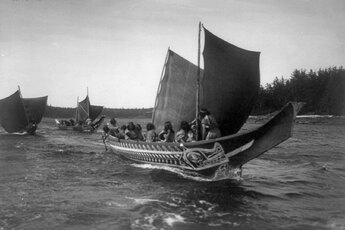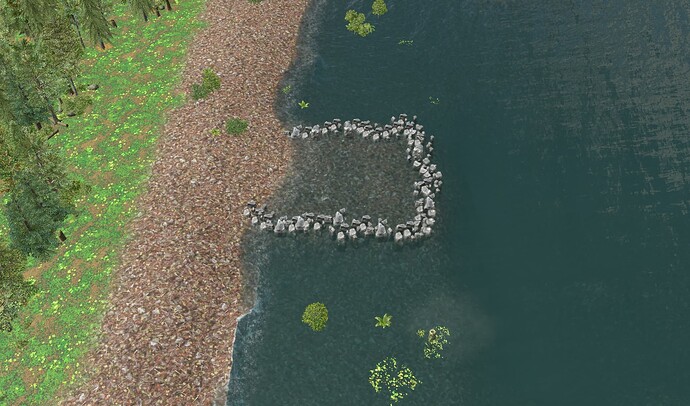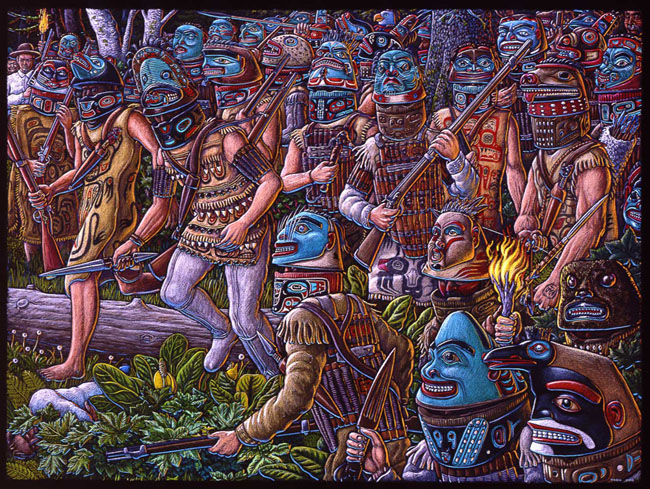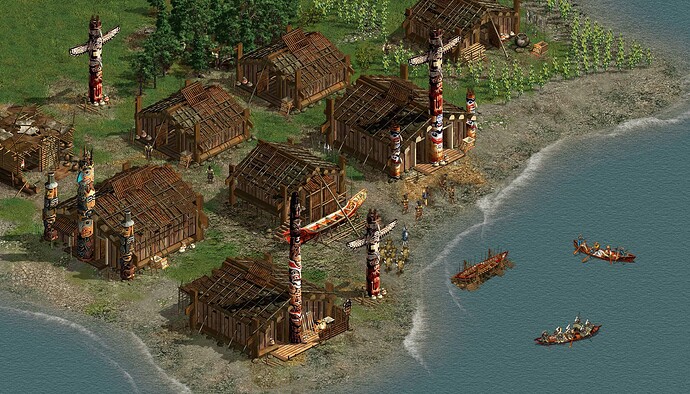Background
The native peoples of the Pacific Northwest (PNW) have a rich and unique culture that would make for an excellent addition to the game. The best representatives of this culture are the Haida and Tlingit who were fierce warriors that raided along the coast in massive canoes and fought using a mix of modern firearms and traditional armours. This civilization would represent an amalgam of Haida, Tlingit, and Tsimshian peoples who shared a common culture of matrilineal clan structures, potlatch celebrations, coastal economies, intricate artwork like totems and armours, and raiding and captive taking. The specifics of this proposal lean more towards Haida being the face of this civilization because they were the best mariners who raided far beyond their homeland, are more centrally located, and have successfully exported their iconic artwork in modern times. However, Tlingit also have a strong case for being the civ’s namesake. They had a larger territory and population, and more coordinated confrontations with Western powers like the Russians, Americans, and British. But ultimately both groups have a largely shared culture with the main point of difference being language, so either one could be the name of the civilization.
Civilization Archetype
They should obviously follow the archetype of the Native civilizations, specifically, the northern North American ones. However, they should be able to mine normally, as they have a long history of metalworking of native copper and iron from shipwrecks and trade. To be fair, Haudenosaunee should also be able to mine normally as copper mining around the great lakes is ancient and there is no taboo against it like among the Lakota. Other elements would be shared like a tribal council instead of a home city and some buildings.
Leader
If the civ is labeled Tlingit, Ḵʼalyaan would be an obvious choice. He lead them against the Russians in the Battle of Sitka. If the civ is labeled Haida, Koyah would be a good pick. He was notorious for fighting against and capturing American vessels.
Buildings
Largely the same as Haudenosaunee with a few replacements.
Clam Garden
A “farming” building where villagers and/or fishing boats can gather food from clams and other marine animals. Supports 8 gatherers including fishing boats if built near enough to the shore. Visually, the building could appear as a tidal pool surrounded by a retaining rock wall and some drying racks.
Due to abundant marine and forest resources, PNW peoples traditionally did not practice agriculture so the aquaculture of Clam Gardens would serve as a replacement for Farms. The exception to this was tobacco, which had long been cultivated, and would justify the civ having Plantations. Without Farms, the food upgrades they provide would obviously be lacking, and those upgrades don’t really fit with Clam Gardens. Instead, Clam Gardens could have more focused upgrades that primarily improve the building itself with much milder effects to the general gathering of villagers and boats. The general food upgrades could be found at other buildings, mainly Totem Poles. For example, one of these upgrades could be Food Cache Pits.
Agriculture was eventually adopted when the Spanish brought potatoes to the Haida around 1800. However, this is a rather late development, so at most they could have limited access to Farms that is gated behind a card or technology.
Totem Pole
Totem Poles are one of the most iconic elements of PNW native culture, with some of the most elaborate coming from the Haida. They serve a variety of functions ranging from decoration, heraldry, commemorating people or events, welcome or warning signs, shaming people for debts or misdeeds, or simply displaying wealth.
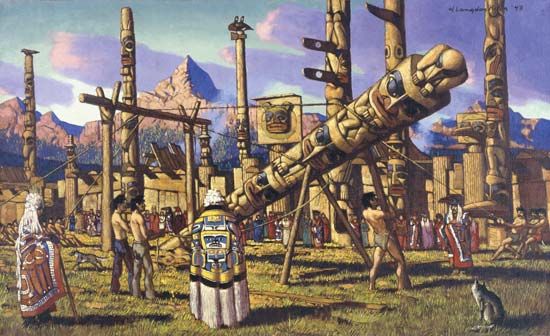
Representing the ancestral knowledge of culture, mythology, history, and kinship could be done by making Totem Poles the go to building for researching technologies. They could feature technologies and big button upgrades roughly equivalent to those found at the Church, Arsenal, Capitol, and Farm. This could be further reinforced by having newly constructed Totem Poles grant their first technology for free (similar to the Virginia General Assembly card). To balance this, Totem Poles would be limited to one per age and be unable to be deleted (like Manors). Destroying Totem Poles would therefore be detrimental as it would give an essentially free tech to enemy players.
In addition to a plethora of technologies, Totem Poles could have other advantages such as a large LoS to represent their use as a warning/welcome sign and a small experience trickle to represent their aesthetic beauty and cultural significance. Their function of shaming for misdeeds could be represented in a card that adds a debuff aura that weakens nearby enemy units or lowers enemy gather rates.
In terms of cost, they should be fairly cheap with a significant build time and relatively expensive technologies within.
Longhouse
Functionally similar to the Haud Longhouse, but visually distinct with a central totem pole (at least for later ages since there were variations without it).
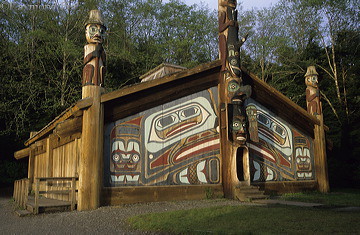
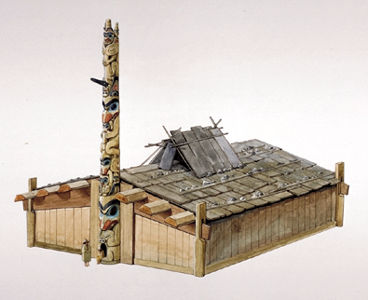
With the Haida/Tlingit missing Farms, they would be lacking a building with which to fatten livestock. This could be covered by a Salish Woolly Dogs big button technology at the Longhouse that grants Longhouses the ability to fatten livestock and grants them a small coin trickle. Dogs were the only domestic animal in the region, and Salish Woolly Dogs were raised for their fur and needed to be prevented from interbreeding with hunting dogs that lacked such woolly coats by keeping them within houses or separate islands.
Potlatch Plaza
An enhanced version of the Community Plaza, with an emphasis on the potlatch ceremony of feasting and gift giving to redistribute resources, foster connections, and display power. The main difference from the Community Plaza would be a Potlatch Ceremony that equalizes the stockpile of all resources (similar to the Balance of Powers royal house ability). This ability would be extremely powerful, so it could work gradually like how Lombards convert resources. Other civ specific ceremonies like a Carving Ceremony that speeds building and heals/buffs buildings could be included.
For better visual clarity, villagers and Medicine Men tasked to the Potlatch Plaza should wear the elaborate wooden masks similar to the ones shown below. This would actually give some visual feedback that they are working unlike the standing around at the Community Plaza.
Ultimately, the Community Plaza is just a lazy re-branding of the Fire Pit, and a more specific version for each civ that has one would be a huge improvement. Aztec and Inca could get a Temple Plaza, and Lakota and Hauds could get a Dance Plaza.
Shared Buildings
Town Center
Market
Plantation
Dock
Walls
Trade Post
Native Embassy
War Hut
Siege Workshop
Stronghold - Fortifications were common in the PNW and the Tlingit built forts such as Hoodsnahoo or Shis’g’i Noow (Green Wood Fort) that were capable of withstanding Russian cannon fire. The Haida had a fort which was outfitted with 18 cannons.
Units
General Units:
War Chief (most similar to Haud WC)
Medicine Man (Healer) - See amendment {Shaman}
Villager
War Hut Units:
Aquientor Archer
Aquientor is an Iroquioan term for a type of armour consisting of bound together sticks or wooden slats. Coincidentally, the west coast natives developed essentially the same type of armour. These guys would function as an archer with massive ranged resistance. Since this type of arms and armour was used by Iroquioan peoples, Aquientor Archers could be shared with Haudenosonee.
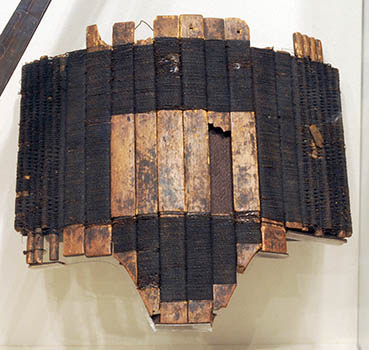
Harpooner
See amendments {Harpooner} and {Seawolf Marine}
Harpooners would serve as a pike-musk hybrid with lower overall stats than a Musketeer, but a higher anti-cav multiplier. The people of the PNW used harpoons extensively to hunt aquatic animals, so this could be reflected by giving them a helmet adorned with a sea lion, orca, or shark.
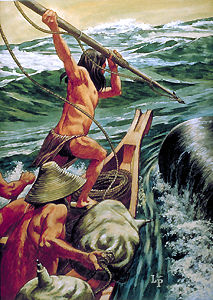
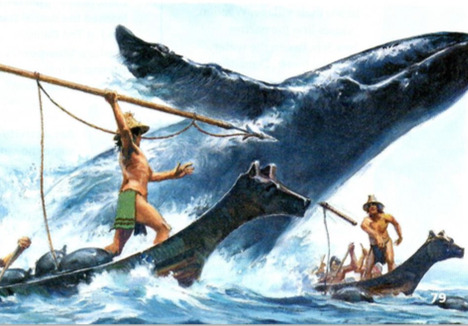
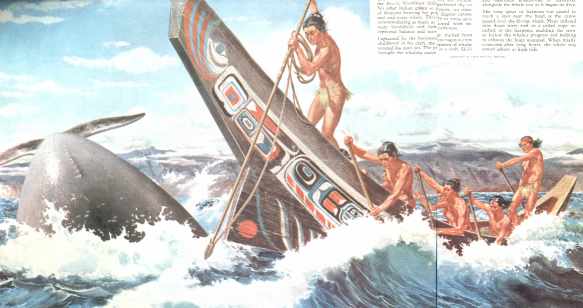
Raven Raider
See amendment {Raven Raider}
Ravens feature heavily in the mythology of the natives of the Pacific Northwest Coast, with a depiction as a supernatural creator and trickster. It is also an important part of their kinship structure with all people being part of one of two moieties of Raven or Eagle/Wolf.
Horses were unavailable to the Northwest Coast natives, and even if they had been, the mountainous terrain separated into numerous islands is entirely unsuitable for cavalry. Therefore shock infantry Raven Raiders would cover the melee cavalry role. Their stats could be very similar to Chimu Runners, with abilities such as stealth to represent the trickster archetype of ravens in their legends. Visually, they should have a raven crested helmet and wield a double ended dagger/sword. I’ve given them a bit higher siege attack and a bonus versus treasure guardians somewhat like the Hausa’s Raiders, but in this case the bonus makes a bit of sense since ravens like shiny treasures.
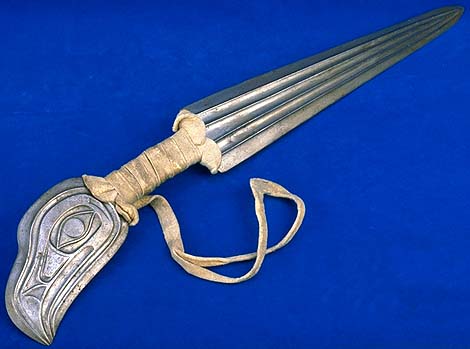
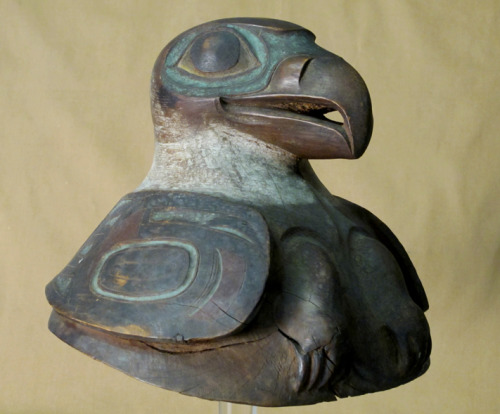
Forest Prowler
The Forest Prowler is generic enough in name and appearance that it could work for both Hauds and Haida/Tlingit. The region is heavily forested so the name fits, and they went into battle with ##### #### paint very similar to how Haud Forest Prowlers are depicted. Firearms were a major trade item in the maritime fur trade, and the Haida and Tlingit were astute traders that only accepted the highest quality guns. Therefore, the powerful Forest Prowler is an accurate portrayal of PNW warriors.
Gaagiid Berserker
One of the most iconic elements of Pacific Northwest warfare is their suits of heavy wooden armour consisting of ornately carved wooden helmets and thick leather covered in wooden slats. The helmets were tall and thick with animal crests or monstrous features to intimidate enemies. One such monster was the Gaagiid of Haida mythology. Gaagiid are powerful, supernatural wildmen that became possessed after becoming lost in the woods or almost drowning. Nearby tribes such as the Salish called on malevolent spirits to whip them up into a berserk frenzy. This is strikingly similar to the feared berserkers of the Vikings, and the similarities don’t end there, since the Haida are often called the Vikings of the Pacific Northwest due to their frequent and far ranging raids.
I’ve gone with the name Gaagiid Berserker since it makes them more specifically Haida and fits the look, but simply calling them Berserkers could also do especially if the civ is named Tlingit. If that course is taken, Gaagiid could be made into an outlaw version of the unit alongside other semi-mythological native outcasts like Wendigos.
Functionally, this could work something like a Doppelsoldner but with exceptionally high melee armour. To offset this, they could have a lower speed and cavalry multiplier as well as a wood cost. Gaagiid Berserkers could be armed with heavy weapons like war picks, whalebone clubs, and hammers. Different stances could showcase different weapons.
After contact with the old world, these armours were further reinforced with newly available materials such as Chinese coins. This could be represented via a Qing Coin Armour card that grants +10% ranged armour to heavy infantry and swaps the Gaagiid Berserker’s wood cost with coin.
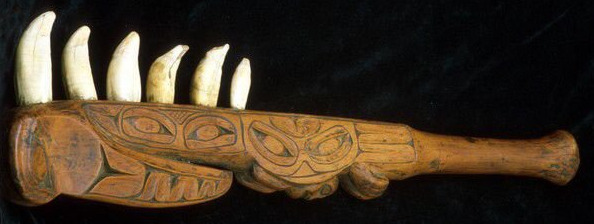
Siege Workshop Units:
Ram
When it comes to sieging PNW fortifications, it was preferred to avoid direct frontal assaults and use less costly methods such as night attacks and treachery instead. However, sieges did happen, and they needed tools to batter their way into buildings. A ram is a fairly simple tool, and would have been well within the capabilities of the expert carvers in the region so it is a plausible weapon at their disposal. There are also many accounts of crafting logs into siege engines or hurling them down at enemies. For example, the Tsimshian chief Legex fashioned siege engines from hollowed out logs which were used to shield the besiegers as they approached a fort, and then were used as ramps to scale the walls. The Gitxsan chief Nekt used logs defensively by releasing them from atop palisades to roll down and crush attackers trying to scale the walls. These “man crushing logs” or similar defences of hurling down boulders or logs with sharpened branches were common tactics and could be grounds for a card or tech that lets Rams actually attack units.
Carronade
See amendment {Carronade}

Both the Haida and Tlingit obtained cannons from trading and capturing European and American ships. There are accounts of cannon fire from Haida villages in response to ship bombardment. Tlingit also fired artillery at Russians besieging one of their forts. Since these cannons primarily came from ships, their main type of cannon should be a Carronade. This unit could be shared with other potential civilizations such as the Hawaiians and Maori.
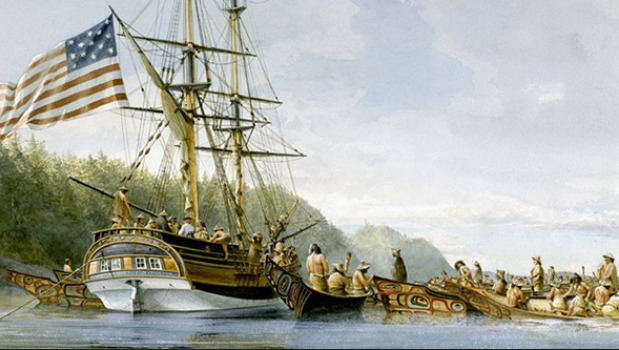
Light Cannon
See amendment {Swivel Gun}
Since the PNW tribes had such extensive access to artillery, it wouldn’t be out of the question to give them access to Light Cannons. If not directly trainable from the Siege Workshop, they should at least be attainable through a Stronghold tech that sends a few and/or an infinite shipment.
Dock Units:
Fishing Boat
Same old Fishing Boat as the other Native Civs.
Dugout Canoe
The PNW peoples did not use bark canoes like most other native tribes. Instead they used dugout canoes carved from large logs. There were several styles of dugout canoes, with the main kinds being a western style used by the Nootka and Chinook, and a northern style used by the Haida and Tlingit. The northern style would be the obvious choice, but since that depiction would be used for the larger vessels, the smaller basic dugout canoe could use the western style, or potentially an even more generic style. These would have plausibly been used since Haida canoes were a major trade good, and after trading away their canoes, the Haida would use old mainland canoes for their return voyages. Dugout Canoes could also serve as the boat that is enabled by allying with Nootka and Klamath, and they could replace regular Canoes for Aztecs, since all these peoples used dugout rather than bark canoes.
Functionally they could be similar to regular Canoes but slightly scaled up in stats and cost. They should be available in age 2, and the build limit could be lower than Canoes to reflect the higher stats and availability of other ships.

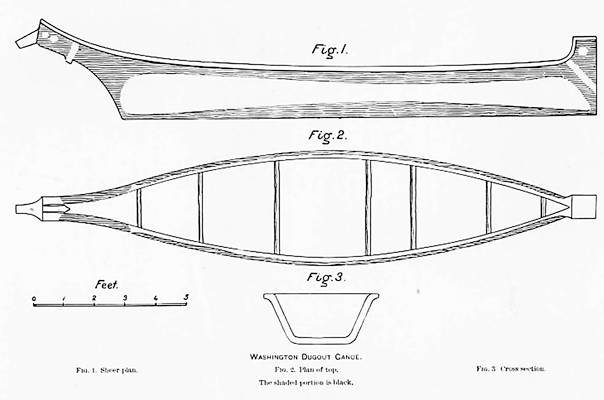

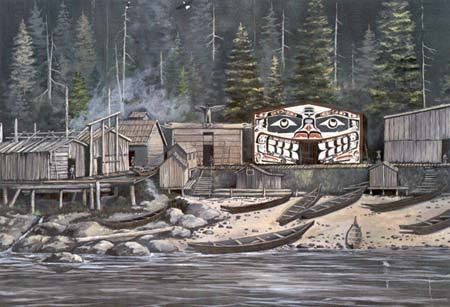
War Canoe
The existing War Canoe is already based on the style of Canoe of the PNW, so obviously they should have access to it. Like other civs, it would be available in age 3, but it could have a slightly lower build limit to make room for other larger ship types.
Head Canoe
The massive red cedars on the west coast were used to build canoes of an immense scale. They could reach a length of 20 meters and fit a crew of 60 paddlers. The main hull was hewn from a single large log, and the largest canoes known as Head Canoes were further built up with decorative crests attached to the bow and stern and widened beyond the original diameter of the tree by forming the wood with steam. The best of these canoes were built by the Haida since they had access to the best cedars and had to navigate the most treacherous waters, but they also traded them to their neighbours.
Naval battles were traditionally conducted by firing ranged weapons like slings and bows or by boarding and engaging in savage melee. These canoes were also outfitted with large stones called canoe breakers that were hurled at enemy vessels to smash them apart. This could be represented by a canoe breaker charged attack that deals massive damage and stuns its target, but at a shorter range than a broadside. Head Canoes should be available in age 3 and would cover the roles of both Galleons and Frigates, with a charged attack, powerful combat capability, and the ability to train all War Hut units.
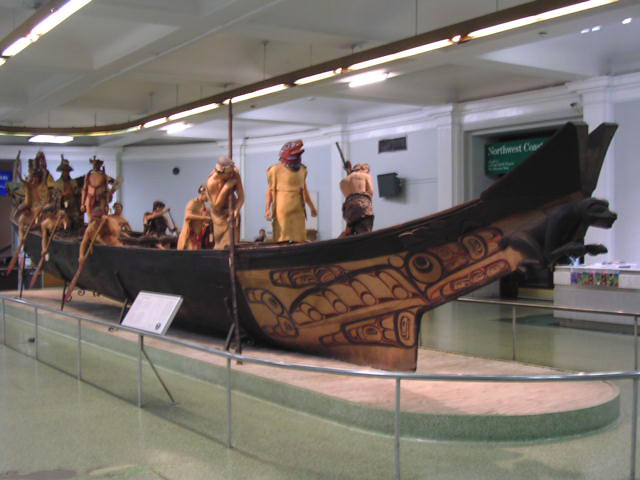

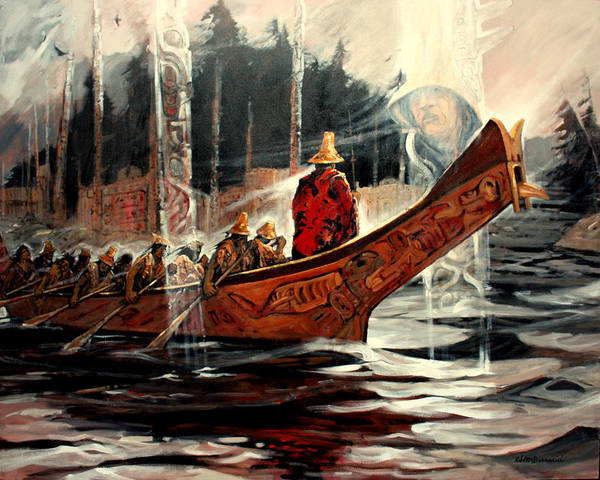

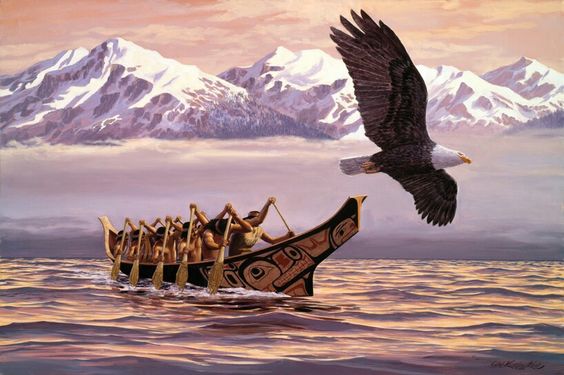
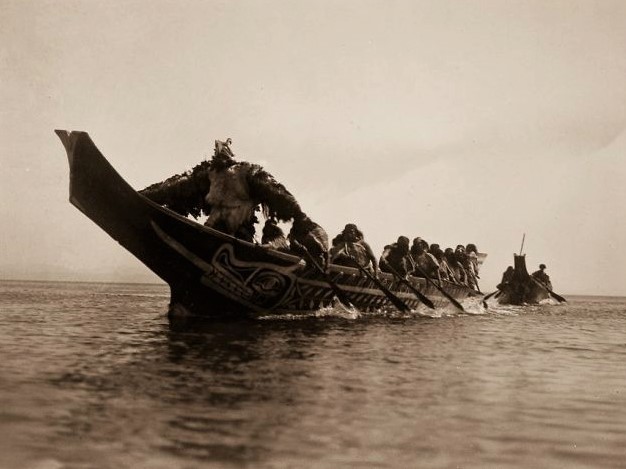
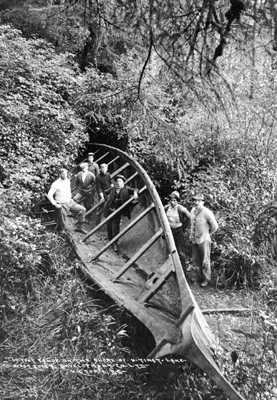
Sailing Canoe
Canoes of the PNW did not traditionally have sails, but they were quickly adopted after they saw their use on European ships. In later accounts of conflicts, sailing canoes are commonplace. Another technology adopted from Europeans was the mounting of artillery on canoes. These were primarily smaller pieces like swivel guns, but they were powerful enough to split canoes, so at least some of them would have likely been fairly substantial. Sailing Canoes could feature as an age 4 naval unit that features both of these innovations as the pinnacle of canoe technology. The large crests of Head Canoes hindered mobility under sail and were eventually phased out. Therefore, Sailing Canoes could be depicted slightly smaller, but with a large forward pointing swivel gun. With this configuration, they could serve the role of bombardment vessel like Monitors and Cannon Boats. But instead of being tanky with long range, it could be maneuverable with moderate range but faster RoF.
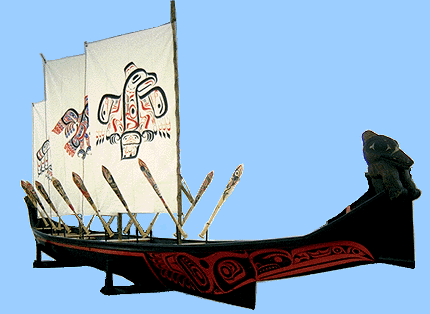
Fire Canoe
See amendment {Fire Canoe}
Cards
See comment for a list of some potential cards.
